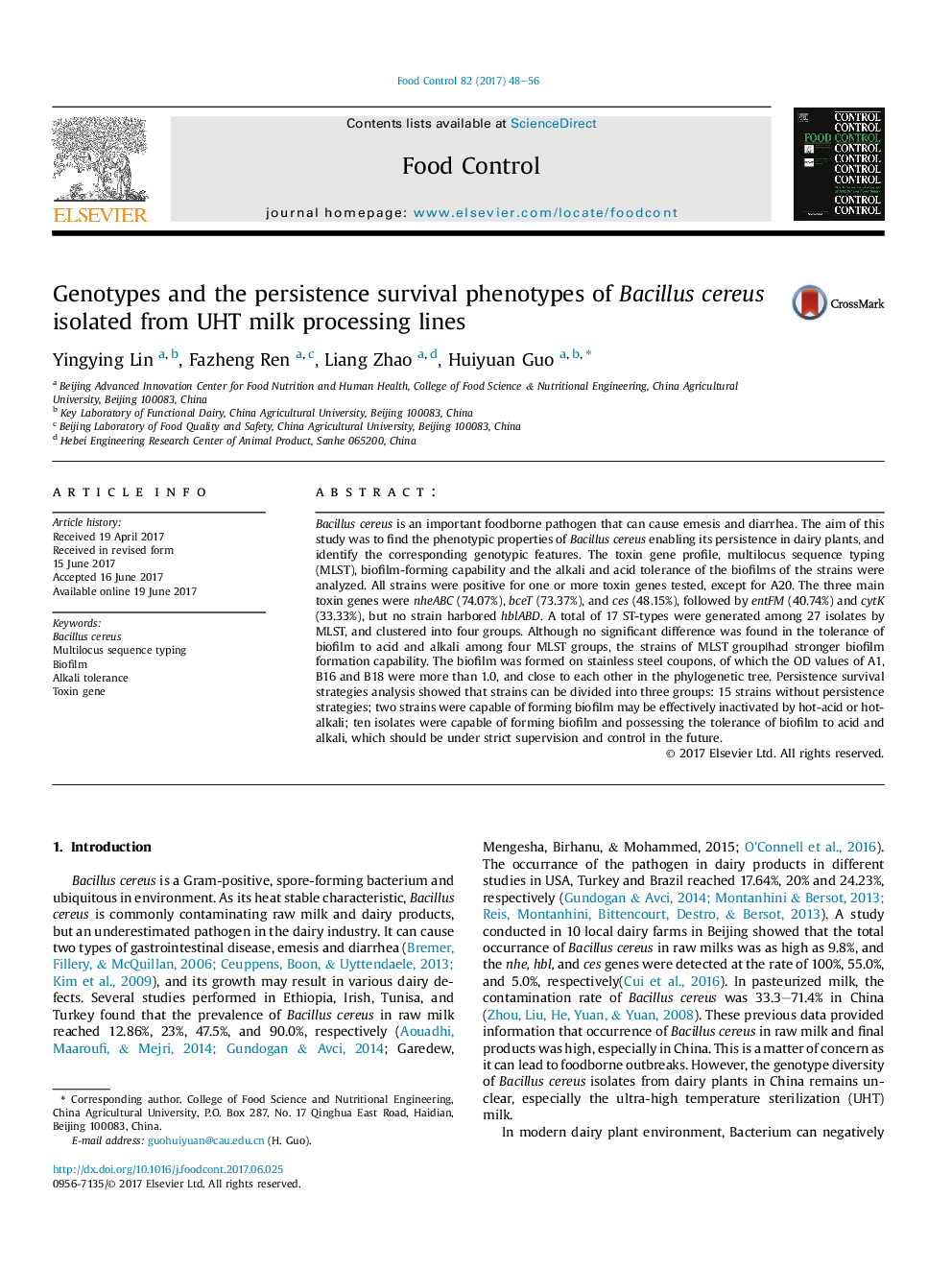| کد مقاله | کد نشریه | سال انتشار | مقاله انگلیسی | نسخه تمام متن |
|---|---|---|---|---|
| 5767133 | 1628382 | 2017 | 9 صفحه PDF | دانلود رایگان |

- The main toxin was nheABC (74.07%), but no strain harbored hblABD.
- 17 ST-types were generated among 27 isolates by MLST, and clustered into four groups.
- Strains of MLST groupâ
had stronger biofilm formation capability.
- Ten persistent strains were capable of forming biofilm and possessing the tolerance of biofilm to acid and alkali.
:Bacillus cereus is an important foodborne pathogen that can cause emesis and diarrhea. The aim of this study was to find the phenotypic properties of Bacillus cereus enabling its persistence in dairy plants, and identify the corresponding genotypic features. The toxin gene profile, multilocus sequence typing (MLST), biofilm-forming capability and the alkali and acid tolerance of the biofilms of the strains were analyzed. All strains were positive for one or more toxin genes tested, except for A20. The three main toxin genes were nheABC (74.07%), bceT (73.37%), and ces (48.15%), followed by entFM (40.74%) and cytK (33.33%), but no strain harbored hblABD. A total of 17 ST-types were generated among 27 isolates by MLST, and clustered into four groups. Although no significant difference was found in the tolerance of biofilm to acid and alkali among four MLST groups, the strains of MLST groupâ had stronger biofilm formation capability. The biofilm was formed on stainless steel coupons, of which the OD values of A1, B16 and B18 were more than 1.0, and close to each other in the phylogenetic tree. Persistence survival strategies analysis showed that strains can be divided into three groups: 15 strains without persistence strategies; two strains were capable of forming biofilm may be effectively inactivated by hot-acid or hot-alkali; ten isolates were capable of forming biofilm and possessing the tolerance of biofilm to acid and alkali, which should be under strict supervision and control in the future.
Journal: Food Control - Volume 82, December 2017, Pages 48-56